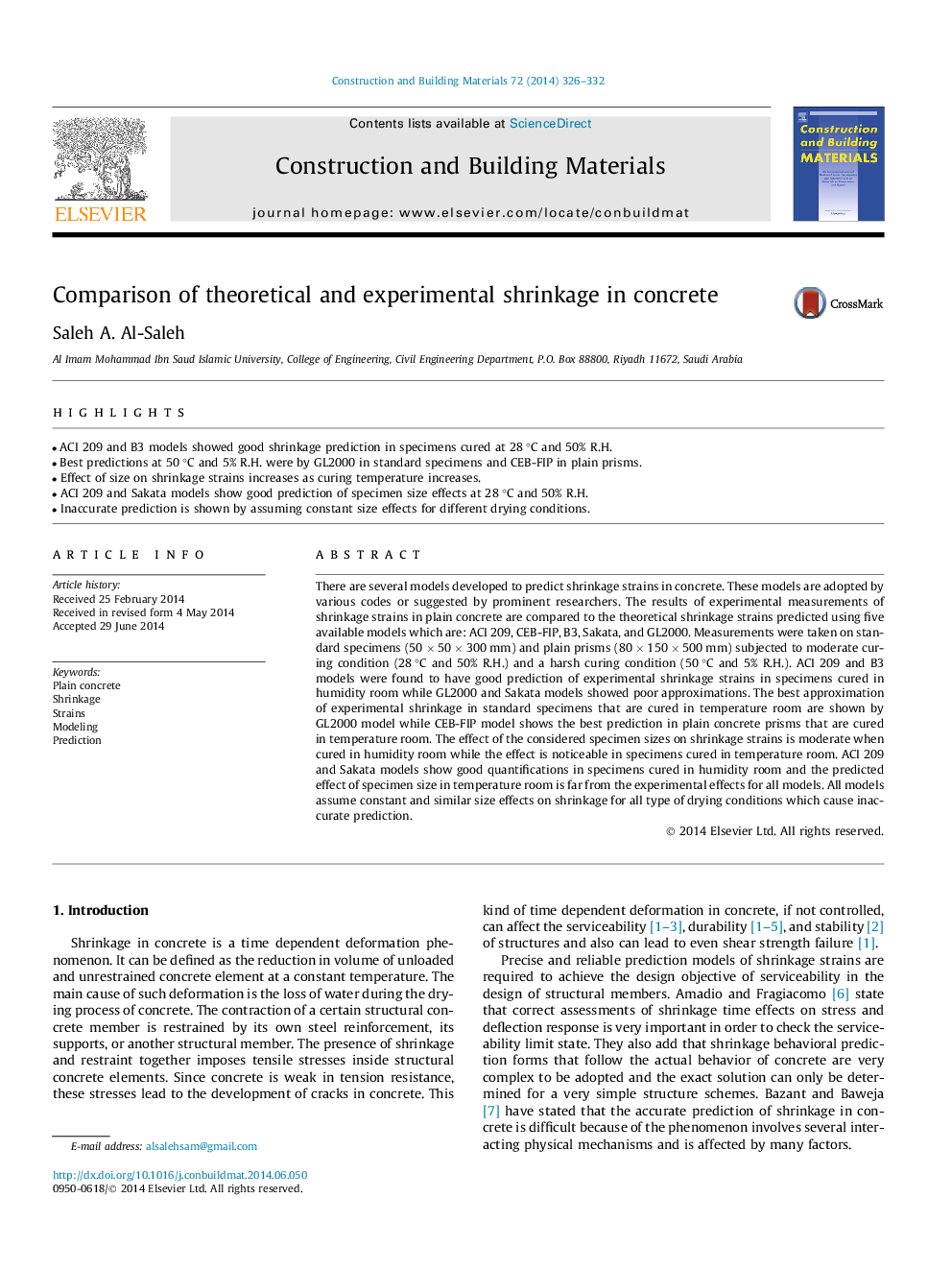| کد مقاله | کد نشریه | سال انتشار | مقاله انگلیسی | نسخه تمام متن |
|---|---|---|---|---|
| 6722174 | 503581 | 2014 | 7 صفحه PDF | دانلود رایگان |
عنوان انگلیسی مقاله ISI
Comparison of theoretical and experimental shrinkage in concrete
ترجمه فارسی عنوان
مقایسه انقباض تئوری و تجربی در بتن
دانلود مقاله + سفارش ترجمه
دانلود مقاله ISI انگلیسی
رایگان برای ایرانیان
کلمات کلیدی
بتن خالص، انقباض، فشارها، مدل سازی، پیش بینی،
موضوعات مرتبط
مهندسی و علوم پایه
سایر رشته های مهندسی
مهندسی عمران و سازه
چکیده انگلیسی
There are several models developed to predict shrinkage strains in concrete. These models are adopted by various codes or suggested by prominent researchers. The results of experimental measurements of shrinkage strains in plain concrete are compared to the theoretical shrinkage strains predicted using five available models which are: ACI 209, CEB-FIP, B3, Sakata, and GL2000. Measurements were taken on standard specimens (50 Ã 50 Ã 300 mm) and plain prisms (80 Ã 150 Ã 500 mm) subjected to moderate curing condition (28 °C and 50% R.H.) and a harsh curing condition (50 °C and 5% R.H.). ACI 209 and B3 models were found to have good prediction of experimental shrinkage strains in specimens cured in humidity room while GL2000 and Sakata models showed poor approximations. The best approximation of experimental shrinkage in standard specimens that are cured in temperature room are shown by GL2000 model while CEB-FIP model shows the best prediction in plain concrete prisms that are cured in temperature room. The effect of the considered specimen sizes on shrinkage strains is moderate when cured in humidity room while the effect is noticeable in specimens cured in temperature room. ACI 209 and Sakata models show good quantifications in specimens cured in humidity room and the predicted effect of specimen size in temperature room is far from the experimental effects for all models. All models assume constant and similar size effects on shrinkage for all type of drying conditions which cause inaccurate prediction.
ناشر
Database: Elsevier - ScienceDirect (ساینس دایرکت)
Journal: Construction and Building Materials - Volume 72, 15 December 2014, Pages 326-332
Journal: Construction and Building Materials - Volume 72, 15 December 2014, Pages 326-332
نویسندگان
Saleh A. Al-Saleh,
